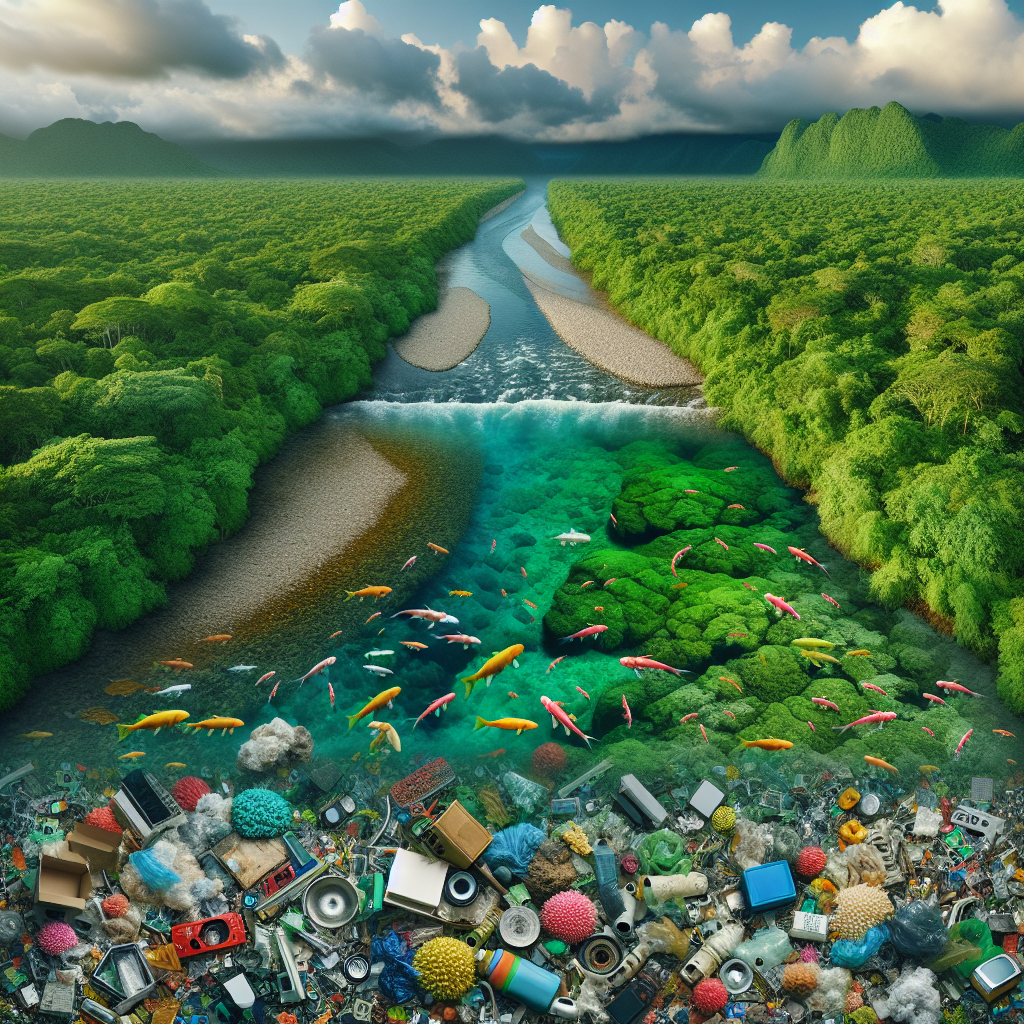Blog Ecobraz Eigre

The impacts of e-waste on soils, rivers and oceans
Electronic waste has caused serious environmental impacts, affecting soils, rivers and oceans. Toxic components present in this waste contaminate the environment, damaging ecosystems and human health. In this article, we discuss how the improper disposal of electronic equipment contributes to pollution and what measures can be adopted to mitigate this damage.
What is electronic waste?
Electronic waste, also known as e-waste, refers to discarded electronic equipment and components, such as cell phones, computers, televisions and batteries. With technological advances and the constant renewal of devices, the amount of electronic waste is increasing exponentially, creating a serious environmental problem.
Soil contamination
Soils are directly affected by the improper disposal of electronic waste. Many devices contain heavy metals such as lead, mercury, cadmium and chromium, which, when released, seep into the soil, contaminating it and damaging the plant and microbial life essential for soil fertility. This contamination can reduce agricultural productivity and compromise food security.
Impact on rivers
When e-waste is disposed of in inappropriate places, there is a high risk of toxic substances being carried by rain and groundwater to rivers and bodies of water. Heavy metals and flame retardants present in electronic devices pollute these aquatic environments, affecting water quality and putting aquatic organisms at risk, as well as compromising the health of the human populations that depend on these water resources.
When e-waste is disposed of in inappropriate places, there is a high risk of toxic substances being carried by rain and groundwater to rivers and bodies of water.
Ocean problems
The oceans also suffer from electronic waste. A lot of waste reaches marine waters through streams, rivers and improper disposal, accumulating on beaches and the seabed. Electronic components release chemical pollutants that contaminate marine life, such as fish and crustaceans, and can enter the food chain and cause significant ecological imbalances, as well as impacts on the fishing economy.
The ocean also suffers from e-waste.
Human health consequences
Exposure to heavy metals and toxic substances from e-waste can cause serious health problems, including poisoning, neurological problems, respiratory diseases and even cancer. This is especially true in communities close to areas of irregular disposal, where contact with these contaminants is more frequent and uncontrolled.
Electronic waste can cause serious health problems, including poisoning, neurological problems, respiratory diseases and even cancer.
Measures to mitigate impacts
To reduce the damage caused by e-waste, it is essential to adopt responsible disposal and recycling practices. Reusing components, sending them for recycling and promoting public policies that encourage selective collection are essential. In addition, raising awareness among the population about the importance of correct disposal helps to minimize contamination of soils, rivers and oceans.
The role of technology and innovation
Technological innovations can also contribute to reducing the environmental impact of electronic waste. The development of devices with recyclable and less toxic materials, as well as the creation of efficient systems for recycling and reusing components, help in the sustainable management of this waste.
Conclusion
The impacts of e-waste on soils, rivers and oceans are serious and affect various environmental and social aspects. Contamination by heavy metals and toxic substances compromises biodiversity, water quality and human health. It is therefore essential to adopt appropriate disposal and recycling practices, as well as promoting environmental education and investing in sustainable technologies to meet this challenge.

Deixe um comentário
O seu endereço de e-mail não será publicado. Campos obrigatórios são marcados com *